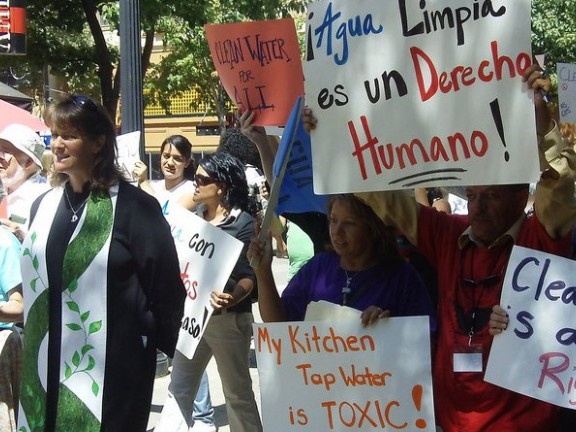Justice & Equity

Polluting facilities across the country are disproportionately located near Black, Brown, and poor communities, and the situation is no different in Maryland. A higher proportion of people of color and people with low wealth live in these neighborhoods compared to Maryland as a whole.
Poverty and systemic racism on their own contribute to worse health outcomes. The additional burden of being exposed to a slew of harmful pollutants only compounds these effects, widening health and economic disparities. For example, South Baltimore residents who live near more than 200 polluting facilities have higher rates of asthma-related emergency room visits, cancer, and heart attacks compared to the rest of the state. On the state's Lower Eastern Shore, manure runoff from industrial poultry operations contaminates the groundwater that rural communities rely on for drinking water, and these farms are disproportionately located near Black, Brown, and poor families. Maryland's regulatory agencies currently do not consider the cumulative effects of social stressors and environmental hazards, including projected climate change impacts, in permitting and enforcement of polluting facilities.
There are also few efforts to meaningfully include affected communities in regulatory processes, such as clear procedures for commenting on new permit applications or reporting suspected violations. Without a full picture of the social and environmental harms affecting a community, state agencies continue to make decisions that unjustly harm families living near polluting facilities.
The Chesapeake Accountability Project (CAP) aims to achieve more equitable and just regulatory decision-making by pushing state agencies to develop tools and processes for assessing cumulative impacts and using those assessments in environmental permitting and enforcement decisions. We are also working to ensure that communities directly impacted by pollution are meaningfully included, properly notified, and given ample opportunity to participate in the decision-making process.
CAP partners also coordinate through the Chesapeake Bay Enforcement Network. The network is in the process of building a community arm that will be made up of frontline communities, communities of color, faith groups, county NAACP chapters, and neighborhood associations concerned about local environmental and climate justice. This forum will foster an inclusive space for residents to learn about how they can become effective champions in the fight against climate change and other environmental threats while increasing awareness about how these threats disproportionately impact certain areas in the region.